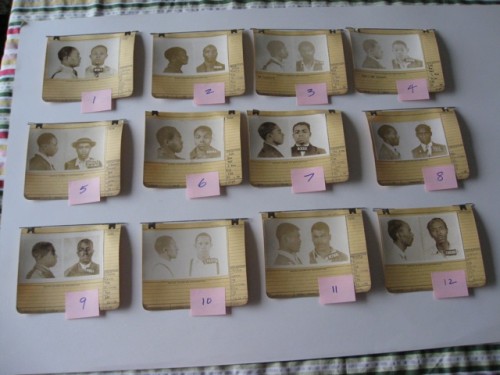Black/Inside: Curating A History of Black Incarceration
Last summer, I decided to curate a photographic exhibition to commemorate the 40th anniversary of the Attica Prison Uprising. The exhibition which included photographs from John Shearer (who kindly sent them to me) and from my own collection of newspaper wire photos was incredibly well received. It culminated with a reading of original prose and poetry written by Attica prisoners and observers as well as a presentation by Michael Deutsch who shared his reflections about defending some of the Attica Brothers.
The experience that most impacted me though was the visit that I facilitated for a group of middle school boys from a local after-school program. As the young men walked around looking at the photographs, I watched their faces closely. Some seemed perplexed, others were clearly fascinated and a few were upset.
After they had seen the pictures, I asked how many of them had ever heard of the Attica Prison uprising. Out of the group of about 16 young men (all Black and Latino), not one hand went up. None had heard about the Attica rebellion. This was not at all surprising to me. Most people haven’t. But it was the response to my next question that really shook me. I asked how many of them knew a friend, relative, or neighbor who had been or was currently “locked up.” Every single hand in the room went up. Every single one. 16 out of 16.
This happened in September of last year and I haven’t written about it before today because I have been trying to process the experience since then. What does it mean when young men of color grow up not knowing the history of Attica but knowing so many people in their lives who were or are incarcerated? How do they make meaning of this experience? What lessons are they learning about how the world works for black and brown people?
After a few months of consideration, I have decided to take on an ambitious project. With the help of my friend Teresa Silva, who is a museum curator and scholar, I plan to organize some sort of an exhibition this year that will narrate a history of black imprisonment in the U.S.
I may have mentioned here in the past that I am a collector of prison-related artifacts. I have been for over 15 years now and have amassed a treasure trove of items relevant to the history of black people’s relationship to the criminal legal system in the U.S.
So with Teresa’s help, I am hoping to offer an opportunity for young black people in Chicago to interrogate themes related to the prison industrial complex: past, present, and future. My intention is to help young people to develop critical thinking about the experience of incarceration in the U.S., to identify its root cause, to consider resistance efforts, and to apply the experience to their own current circumstances.
I heard Rinku Sen recently say that: “Information is not power. Power is power and action makes information a conduit to power.” My challenge in co-curating this exhibition will be to make sure that young people don’t simply walk away with information but with a real desire to take ACTION today to address the epidemic of mass/hyper-incarceration which is ravaging black and brown communities across the U.S.
Stay tuned to hear about our progress in organizing the exhibition which I hope will open in October or November of this year. Much remains to be done, to start with, I need to find a venue for the exhibition. More details will be forthcoming and I welcome your ideas about what you might include in such an exhibition. How would you tell a history of black imprisonment in the U.S. in a way that would be empowering rather than dispiriting? I’d love to hear any thoughts about this.
I am dedicating this project to my young friend who committed suicide this past November.
In the meantime, I wanted to share one piece of my collection of stuff. Below are a set of vintage original mug shots from police records in Pennsylvania in the 1930s through the 1950s.
Also, here is Angela Davis making an important point about the failure of the educational system to teach about history and literature. This is why I have always worked to develop opportunities outside of the classroom to share historical knowledge with the broader public. It has been a motivating factor in my work since I was a teenager:

